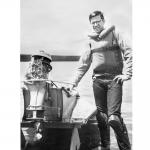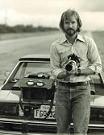You sure are right about Harleys, and lots of other prime vehicles, having been cheap forty five and fifty years ago. The trouble was, once we got 'em cheap and had fun with 'em, we SOLD them. Sold them cheap. Walk around any summer weekend carshow/cruise anywhere in the country and listen to the old men: "Oh man, I HAD one of those! It was mint! Never shoulda sold it! Worth eighty grand today, just the way it was!" I have all too many such stories. One was about the very nice 1960 Duo-Glide, bought for $850 from a machinist who had blueprinted the engine. Had some good times on that big tub . . . once I managed to get it started. The '60 panhead was among the first of the Harleys to have a lot of compression, and one of the last to be kick-start-only! It had the stock ignition and carb, and was cold-blooded. Good thing I was young!


 Thanks:
Thanks:  Likes:
Likes: 



 Reply With Quote
Reply With Quote


Bookmarks